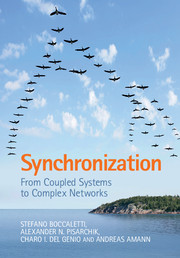3 - Multistable Systems, Coupled Neurons, and Applications
Published online by Cambridge University Press: 22 March 2018
Summary
Multistability is a phenomenon occurring in dissipative systems when several stable attractors coexist for a given set of the system parameters. This phenomenon has been observed in many fields of science, including electronics (Maurer and Libchaber 1980), optics (Brun et al. 1985; Ruiz-Oliveras and Pisarchik 2009), mechanics (Thompson and Stewart 1986), and biology (Foss et al. 1996). The mechanisms responsible for multistability can be many and diverse, including homoclinic tangencies (in weakly dissipative systems) and delayed feedback.
In spite of the possible differences in the origin of multistability, the behaviors of multistable systems share several similarities. All multistable systems are characterized by an extremely high sensitivity to initial conditions, so that even very tiny perturbations can cause a significant change in the final attractor state. Furthermore, their qualitative behavior often changes drastically under just very small variations of their parameters. Finally, the intervals of coexistence of attractors can be so small that a slight perturbation in a control parameter can cause a rapid change in the number of coexisting attractors, giving rise to very complex dynamics.
Synchronization of multistable chaotic systems is particularly relevant to sociology and brain research, where it helps scientists acquire a better understanding of the mechanisms underlying the formation of social groups, the sudden emergence of new ideas, the adoption of innovations, the mechanisms of decision making, and the spread of habits, fashions, leading opinions, and panic. Considering individuals or groups of people as dynamical units, one could say that coordination in their behavior is a type of synchronization. For example, in a crowd, people lose their individuality and act synchronously as a common system. This occurs very frequently when people are affected by a common external force, for instance when they look at or listen to the same object, be it a political leader, a movie, a football game, or a rock concert.
Psychologists and sociologists have long been studying this phenomenon. The first classic treatment of crowds was offered more than 100 years ago by Gustave LeBon (1896), who interpreted the mob behavior during the French Revolution as an irrational reversion to wild animal emotions. Later, a similar view was expressed by Freud (1922).
- Type
- Chapter
- Information
- SynchronizationFrom Coupled Systems to Complex Networks, pp. 77 - 123Publisher: Cambridge University PressPrint publication year: 2018

